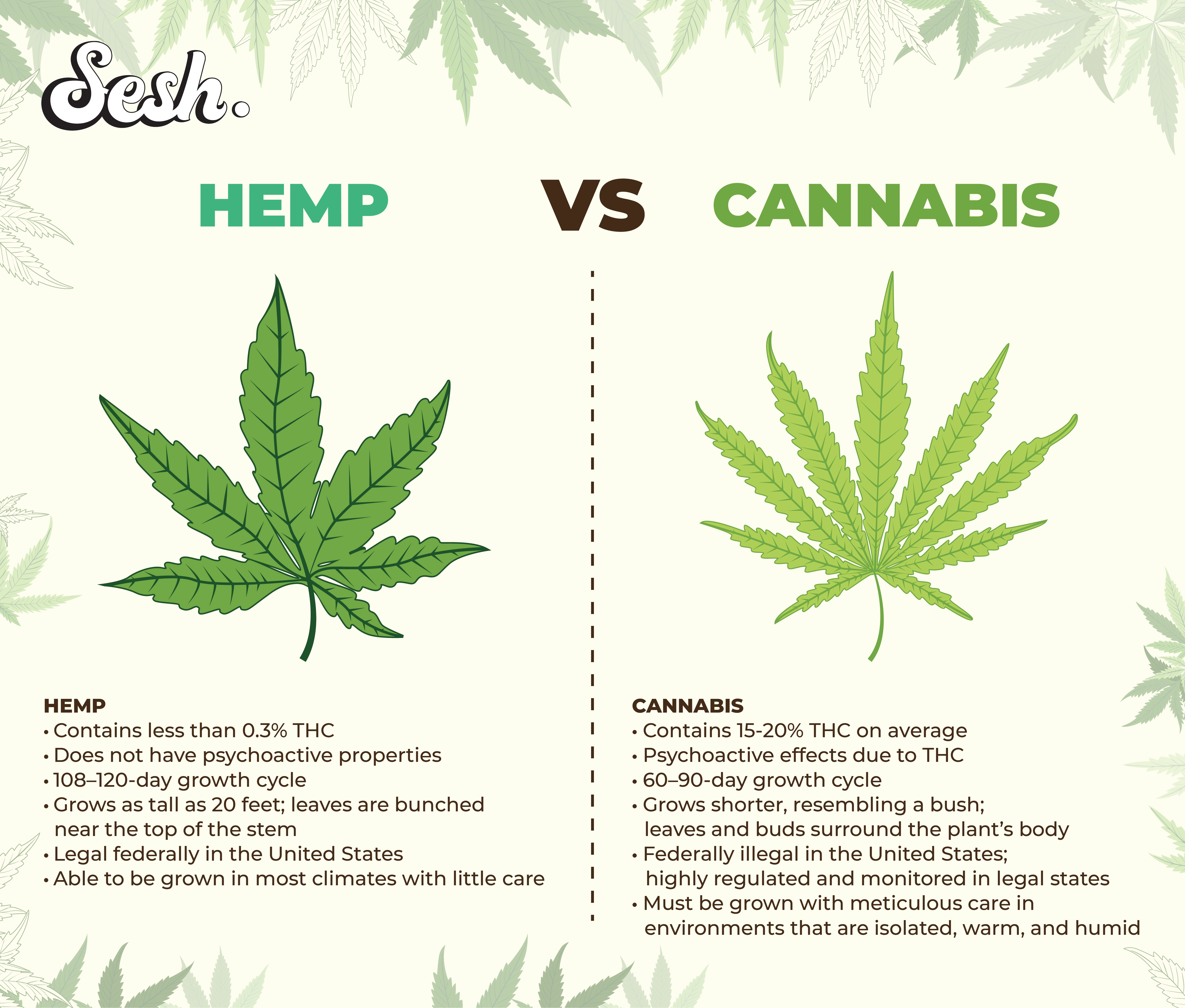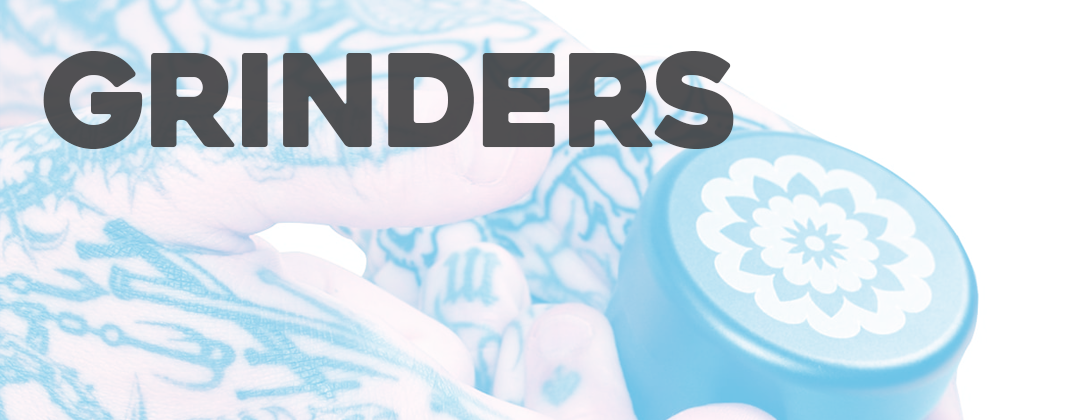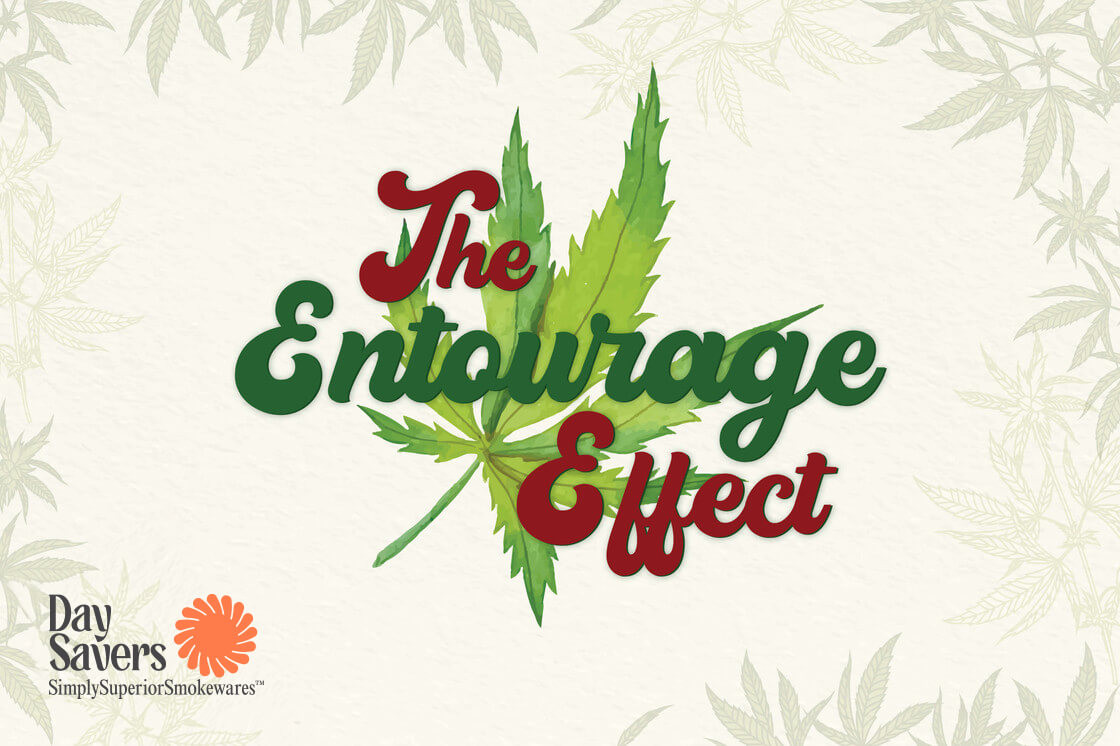What is the Entourage Effect And How to Take Advantage of It
Posted by DaySavers Team on May 10th 2022
You know THC and CBD are at the root of all your favorite cannabis products. What you may not know is that there are hundreds of other botanical compounds you consume every time you smoke, ingest, or vaporize cannabis, and they all work together to impart the effects you feel.
This teamwork is what’s known as the entourage effect. And it’s one of the reasons why no two cannabis strains are the same.
Components of Cannabis and Their Role in the Entourage Effect
There are two things consumers most often look for when buying cannabis: terpenes and cannabinoids. Terpenes are naturally occurring chemical compounds found in plants—all plants, not just cannabis. Cannabinoids are also naturally occurring chemical compounds, but these are found specifically in the cannabis plant. This includes the ones we know and love, THC and CBD, along with hundreds of others.
Here are some of the top compounds to know:
Common Terpenes
- Myrcene: This is the most common terpene found in cannabis. It smells earthy, like cloves. Studies suggest it has anti-inflammatory qualities, and it’s been shown to help with chronic pain.
- Limonene: This is also an abundant terpene in cannabis. It smells citrusy, like lemons. It’s shown the potential to improve your mood and ease worry.
- Linalool: Lavender, mint, and coriander all attribute their scents to linalool. Studies suggest this terpene has super strong sedative and relaxing properties.
- THC: Tetrahydrocannabinol, or THC, is the most well-known and well-studied cannabinoid. Studies suggest that it can help ease nausea, increase appetite, and soothe chronic pain and inflammation.
- CBD: Cannabidiol, or CBD, is close behind as the second most popular cannabinoid. CBD has been shown to help with epilepsy, as well as improve mood, without imparting a high.
- CBN: Cannabinol, or CBN, is a newer cannabinoid to consumers. It’s thought to help with PTSD, diabetes prevention, and weight loss, though more research is needed. At this point in the research, CBN seems similar to CBD. It’s proven to stop seizures in mice, it’s non-intoxicating, and it’s anti-inflammatory.
Common Cannabinoids
These cannabinoids and terpenes, as well as the other few hundred, all come together to provide distinct effects and benefits. They determine both the medicinal and intoxicating effects of each strain, as well as their flavors.


How To Take Advantage of the Entourage Effect
Not every cannabis product has the potential to impart the entourage effect because not every cannabis product contains all of the plant’s compounds. So how do you know if you’re getting the most out of your cannabis? This is where the terms full-spectrum, broad-spectrum, and isolate come into play.
Full-spectrum is a term used to indicate that the main stars of the show, CBD and/or THC, are accompanied by all the other chemicals in the plant. You’ll also see the term “whole-plant” used interchangeably with full-spectrum, as you’re literally getting the whole chemical profile of the plant and all it has to offer when you buy a full-spectrum product. While we’re still waiting on more entourage effect studies about the potential benefits full-spectrum products may offer, there is loads of anecdotal evidence that backs up the belief that the entourage effect gives you more pleasant and therapeutic results.
Broad-spectrum is essentially the same thing as full-spectrum, minus the THC. This is a great option for experiencing the entourage effect if you live in a place where recreational cannabis is still illegal. Since broad-spectrum products include all the same cannabinoids and terpenes as a full-spectrum product except for the THC, you’re able to experience this combo of goodness without the legality issues.
The last type of cannabis product you can get is an isolate. (Think: CBD isolate tincture.) This is exactly what it sounds like—everything has been filtered out but the single cannabinoid you’re looking for. While this form can be beneficial, as you know exactly what you’re getting, research suggests these compounds might not be as beneficial isolated as they are when presented in a combination of both CBD and THC or a full-spectrum product.
Let’s Back It Up
With research, that is. The theory of the entourage effect was first fleshed out by Dr. Ethan Russo in a 2010 study called “Taming THC: potential cannabis synergy and phytocannabinoid-terpenoid entourage effects”. In this article, he discussed “the roots of cannabis synergy” and how these different compounds work better together than they do alone.
A few years later, in 2018, another entourage effect study took place, involving epilepsy patients. Some were given a CBD isolate, while others received a mixture of cannabis compounds, including terpenes. 71 percent of patients who received the mixture experienced fewer seizures. Only 41 percent of patients who received the pure CBD experienced fewer seizures.
While there has not been a ton of scientific research around the entourage effect, Russo’s 2010 article provided a great path for future studies to be done. However, the biggest evidence we have right now is anecdotes from consumers.
Between focus groups and data collection, around 85 percent of people testify to experiencing the entourage effect. While there’s no doubt more scientific studies should be done on this topic, it’s hard to ignore the thousands of reports from real-world consumers.
Obviously, more research is needed to fully validate the entourage effect, but these preliminary studies are promising!









